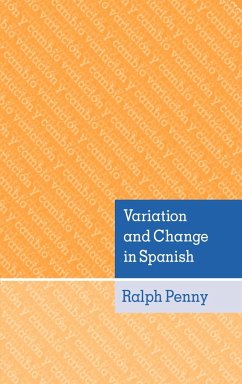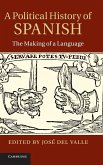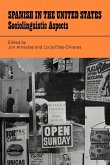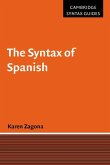This book applies recent theoretical insights to trace the development of Castilian and Latin American Spanish from the Middle Ages onwards, through processes of repeated dialect mixing both within the Iberian Peninsula and in the New World. The author contends that it was this frequent mixing which caused Castilian to evolve more rapidly than other varieties of Hispano-Romance, and which rendered Spanish particularly subject to levelling of its linguistic irregularities and to simplification of its structures. These two processes continued as the language extended into and across the Americas. These processes are viewed in the context of the Hispano-Romance dialect continuum, which includes Galician, Portuguese and Catalan, as well as New World varieties. The book emphasises the subtlety and seamlessness of language variation, both geographical and social, and the impossibility of defining strict boundaries between varieties. Its conclusions will be relevant both to Hispanists and to historical sociolinguists more generally.
Table of contents:
1. Introduction: language variation; 2. Dialect, language, variety: definitions and relationships; 3. Mechanisms of change; 4. Variation in Spain; 5. Variation in Spanish America; 6. Variation in Judeo-Spanish; 7. Standardization.
This book studies the differences of pronunciation and grammar that exist within the Spanish-speaking world, and traces their origins in the frequent mixing of dialects in Spanish-speaking communities from the Middle Ages to the present day, both in Europe and in the Americas.
This book studies worldwide variation in Spanish, and the origins and history of this variation.
Hinweis: Dieser Artikel kann nur an eine deutsche Lieferadresse ausgeliefert werden.
Table of contents:
1. Introduction: language variation; 2. Dialect, language, variety: definitions and relationships; 3. Mechanisms of change; 4. Variation in Spain; 5. Variation in Spanish America; 6. Variation in Judeo-Spanish; 7. Standardization.
This book studies the differences of pronunciation and grammar that exist within the Spanish-speaking world, and traces their origins in the frequent mixing of dialects in Spanish-speaking communities from the Middle Ages to the present day, both in Europe and in the Americas.
This book studies worldwide variation in Spanish, and the origins and history of this variation.
Hinweis: Dieser Artikel kann nur an eine deutsche Lieferadresse ausgeliefert werden.








